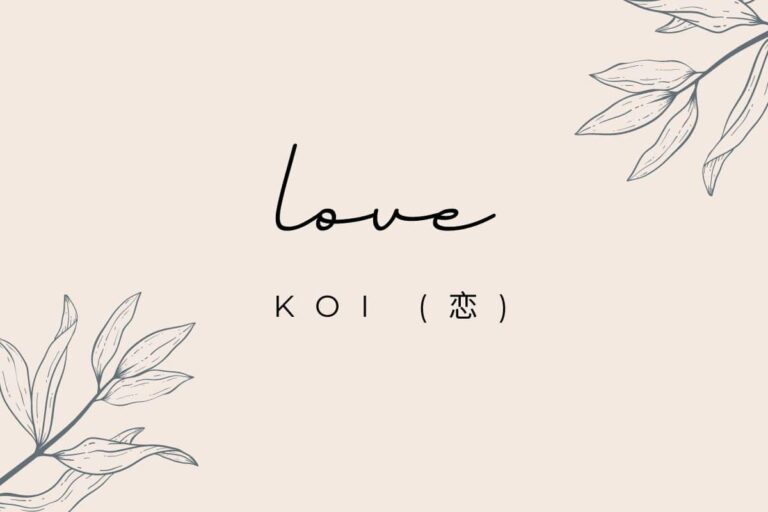Korean vs Chinese — Complete Analysis of Similarities and Differences
This is a detailed comparison of Korean vs Chinese, examining grammar, vocabulary, and pronunciation.
If you speak Chinese already — whether you’re a native Mandarin / Cantonese speaker and can read/write proficiently from school, or if you’re an intermediate non-native learner — you may be wondering how hard Korean is for Chinese speakers.
Or if you’ve learned Korean, you might be wondering how much work you’ll have to do to get proficient at Chinese.
People who haven’t studied either language might think that because Korea and China seem to share a lot of traits, then maybe the languages are closely related.
All of these people may be just looking for an overview of the intricacies of Korean vs Chinese!
Well, as usual, the answer is complicated, but I’ll try to boil it down to as simple terms as possible.
Note: I’ll interchangeably exchange the words Chinese and Mandarin in this article, referring to the same language — Mandarin Chinese as it’s spoken and pronounced in Mainland China and Taiwan. However, of course there are many other Chinese languages, the largest of which is Cantonese.

You might also like
- How Hard is Korean for English Speakers?
- Recap of learning Korean over 3 months
Contents
Korean vs Chinese — Overview
Overall, Korean and Chinese are very different languages, but they do have a shared history.
Korean is actually considered to be a language isolate (Wikipedia). This means it has no direct connection to any other language.
So while it’s an East Asian language, just as Chinese is, it exists standalone.
Chinese, on the other hand, belongs to a family of languages — the Sino-Tibetan family. There are many other languages in this family, including Cantonese, and also Hokkien, Shanghainese, and many more.
Korean and Chinese differ significantly in writing system, phonetics, vocabulary, and grammar.
Despite this, Korean and Chinese do have a shared history. Korean used to (until the 15th century) use Chinese characters for its writing system. In fact, Chinese characters and the Chinese language influence Korean so much that until the mid 20th century, people still learned to write in Chinese, and it was the preferred way to write all academic and formal texts.
Moreover, around 60% of Korean vocabulary consists of Sino-Korean words, or words borrowed from Chinese, either directly or via written texts. This factor somewhat aids Korean speakers in learning Chinese, and vice versa.
We’ll look at the similarities and differences in more detail below.
Korean vs Chinese Syntax / Grammar
Chinese and Korean grammar bear little resemblance. Effectively, they’re entirely separate.
In terms of sentence order, Korean and Chinese are quite different. Korean follows a Subject-Object-Verb (SOV) order.
For example, in the Korean sentence “나는 책을 읽는다” (Naneun chaeg-eul ilg-unda), “나는” (Naneun / I) is the subject, “책을” (chaeg-eul / book) is the object (with an object marker), and “읽는다” (ilg-unda—read) is the verb.
However, Chinese typically has a Subject-Verb-Object (SVO) order, like in English.
In the Mandarin Chinese sentence “我看书” (Wǒ kàn shū), “我” (Wǒ / I) is the subject, “看” (kàn / read) is the verb, and “书” (shū / book) is the object.
In Chinese, you can also opt to restructure your sentences with 把 (ba), indicating that the following word is the object. But Korean doesn’t provide that option.
Regarding conjugation, in Chinese there is no conjugation, whereas in Korean you add a huge number of endings to verbs to indicate formality level, as well as to express mood (for example conjecture, indecision, or a desire).
Consider the following conjugations of 먹다, to eat:
- 먹어 (meog-eo): Informal present tense used with friends and those younger than you.
- 먹어요 (meog-eoyo): Formal yet still somewhat casual present tense used with acquaintances and those of similar age.
- 먹습니다 (meogseumnida): Polite present tense used in formal settings or with those older or of higher status.
- 식사합니다: Formal present tense / verb alternate.
- 먹었어 (meog-eosseo): Informal past tense.
- 먹을 거야 (meog-eul geoya): Informal future tense.
- 먹을 겁니다 (meog-eul geobnida): Polite future tense.
- 먹지 (meogji): Informal imperative (Do eat!).
- 먹어봐! (meogobua!): Very informal imperative.
- 먹으려고 (meog-euryeogo): Expresses intention to eat.
- 먹으니 (meog-euni): Indicates that something happened as a result of eating.
- 먹으면 (meog-eumyeon): If…eat, used for conditionals.
There are literally dozens more of very forms in Korean.
However, Korean still doesn’t conjugate for subject (unlike Indo-European languages).
Speaking of subjects, let’s address pronouns and subjects in Korean vs Chinese.
In Chinese, you nearly always mention the subject of a sentence. Since there’s no conjugation of verbs for subject, it’s necessary for clarity. You can’t just say “Want to eat an apple” (我想吃一个苹果 / Xiǎng chī yīgè píngguǒ ), you usually have to say *I* want to eat an apple (*我*想吃一个苹果 / *Wǒ* xiǎng chī yīgè píngguǒ).
Sometimes the subject of a sentence is clear and doesn’t have to be mentioned. You an ask someone if they’ve eaten of if they want to do something without a pronoun, just as you can in English (“Want to grab a coffee?” — you don’t have to say “you”).
In Korean, even though there’s no conjugation, subjects are rarely mentioned. So people do often say “Want to eat apple” (Colloquially: 사과 먹고 싶어, sagwa meoggo sip-eo), with the context making it clear who the person who wants to eat the apple is.
There are some similarities between Korean and Chinese that are worth mentioning.
Firstly, grammatical gender. Neither Korean nor Chinese have grammatical gender. Nouns have no gender, and verbs and adjectives don’t change with it. This is in contrast with many Indo-European languages (French, German, Spanish, etc.) where the adjectives change, and other languages (Arabic, Hebrew) where even the verbs may change. Count your blessings!
Secondly, there are no noun cases in either Korean nor Chinese, unlike German, Russian, and many other languages.
Finally, there are no plural forms of nouns, or any related changes to make to verbs or adjectives. There are some endings you can add to nouns, but they’re not often used in either language, other than for people.
Anyway, let’s move on to another topic — Vocabulary.
Korean vs Chinese Vocabulary
Ah, comparing Korean vs Chinese vocabulary is where the rubber hits the road. This is where Korean speakers have an advantage learning Chinese, and vice versa.
Even though the languages belong to two different language families, China and Korea have had so much shared and overlapping history that Chinese has had a very strong influence on Korean vocabulary.
Many Korean words have been borrowed from Chinese over the centuries, mainly during the Tang Dynasty. It’s estimated that about 60% of Korean vocabulary is of Chinese origin. They’re often referred to as Sino-Korean words.
For instance, the Korean word for “student,” 학생 (haksaeng), and the Chinese word, 学生 (xuéshēng), both have similar sounds and meanings.
Similarly, “telephone” in Korean is 전화 (jeonhwa) and in Chinese it’s 电话 (diànhuà) – both words are made of two characters: “electric” and “talk”.
Here is a list of common Korean words that have Chinese origins. Sometimes, the Hanja / Chinese origins are not really related to modern usage. However, any Chinese speaker would know the words and be able to guess what the meaning is.
| English | Korean | Transliteration | Hanja | Chinese | Pinyin |
|---|---|---|---|---|---|
| Student |
학생
| Haksaeng | 學生 |
学生
| Xuéshēng |
| Country |
국가
| Gukga | 國家 |
国家
| Guójiā |
| University |
대학교
| Daehakgyo | 大學校 |
大学
| Dàxué |
| Telephone |
전화
| Jeonhwa | 電話 |
电话
| Diànhuà |
| Electricity |
전기
| Jeongi | 電氣 |
电气
| Diànqì |
| Medicine |
약
| Yak | 藥 |
药
| Yào |
| Science |
과학
| Gwahak | 科學 |
科学
| Kēxué |
| Culture |
문화
| Munhwa | 文化 |
文化
| Wénhuà |
| Philosophy |
철학
| Cheolhak | 哲學 |
哲学
| Zhéxué |
| Economy |
경제
| Gyeongje | 經濟 |
经济
| Jīngjì |
| History |
역사
| Yeoksa | 歷史 |
历史
| Lìshǐ |
| Art |
예술
| Yesul | 藝術 |
艺术
| Yìshù |
| Company |
회사
| Hoesa | 會社 |
会社
(More commonly 公司) | Huìshè (Gōngsī) |
| Hospital |
병원
| Byeongwon | 病院 |
病院
(More commonly 医院) | Bìngyuàn (Yīyuàn) |
| Family |
가족
| Gajok | 家族 |
家族
(More commonly 家庭) | Jiāzú (jiātíng) |
| Meeting |
회의
| Hoeui | 會議 |
会议
| Huìyì |
| Newspaper |
신문
| Shinmun | 新聞 |
新闻
| Xīnwén |
| Library |
도서관
| Doseogwan | 圖書館 |
图书馆
| Túshūguǎn |
| Government |
정부
| Jeongbu | 政府 |
政府
| Zhèngfǔ |
| Education |
교육
| Gyoyuk | 敎育 |
教育
| Jiàoyù |
Sino-Korean words are especially common in academic, scientific, and formal terms. This is similar how English academic or scientific words are often of Latin or Greek origin.
However, in daily life, like everyday items and verbs, the Korean and Chinese words are often very different.
See the below table of everyday Korean words that are different from Chinese words. These are words with no Hanja origins.
| English | Korean (Hangul) | Korean Transliteration | Chinese (Simplified) | Pinyin |
|---|---|---|---|---|
| Apple | 사과 | Sagwa | 苹果 | Píngguǒ |
| Peach | 복숭아 | Boksunga | 桃子 | Táozi |
| Strawberry | 딸기 | Ttalgi | 草莓 | Cǎoméi |
| Cucumber | 오이 | Oi | 黄瓜 | Huángguā |
| Eggplant | 가지 | Gaji | 茄子 | Qiézi |
| Carrot | 당근 | Danggeun | 胡萝卜 | Húluóbo |
| Sky | 하늘 | Haneul | 天空 | Tiānkōng |
| Star | 별 | Byeol | 星星 | Xīngxīng |
| Dog | 강아지 | Gangaji | 狗 | Gǒu |
| Cat | 고양이 | Goyangi | 猫 | Māo |
| Bird | 새 | Sae | 鸟 | Niǎo |
| Fish | 물고기 | Mulgogi | 鱼 | Yú |
| Flower | 꽃 | Kkot | 花 | Huā |
| Mountain | 산 | San | 山 | Shān |
| River | 강 | Gang | 河 | Hé |
| Rain | 비 | Bi | 雨 | Yǔ |
| Sun | 해 | Hae | 太阳 | Tàiyáng |
| Moon | 달 | Dal | 月亮 | Yuèliang |
| Wind | 바람 | Baram | 风 | Fēng |
| Snow | 눈 | Nun | 雪 | Xuě |
| Leaf | 잎 | Ip | 叶子 | Yèzi |
| Tree | 나무 | Namu | 树 | Shù |
As a parallel, you can think of the relationship between Korean and Chinese vocabulary similar to that between English and French.
A significant proportion of English vocabulary comes from French. For this reason, English speakers can often recognise words written in French, especially if they’re in academic or formal fields. For example, your average English speaker would recognise a lot of words in the sentence “Le gouvernement a instauré une série de changements qui ont considérablement impacté l’environnement politique.”
However, native words, colloquial expressions, and newer, especially technology-related vocabulary, can be quite different, and pronunciation varies greatly between the two languages. For example, an English speaker with no knowledge of French would find it hard to parse this sentence: “J’arrive pas à croire que ce mec m’a arnaqué de 5 balles. Je suis vraiment un pigeon. Mais ce gars, il est nul, je croyais que c’était mon pote.””
So knowing Korean can help you learn Chinese words, and vice versa. And knowing Chinese is especially helpful, as it gives you insight into the etymology of Korean words.
Korean vs Chinese Writing Systems
In a nutshell, modern Korean uses a phonetic writing system, whereas Chinese still uses characters that give little to no indication as to how they’re pronounced.
Korean used Chinese characters (Hanja) exclusively until 500 years ago, and then continued to use them in many scenarios until the mid 20th century.
But since then, Korean has become almost exclusively based on the new phonetic writing system, Hangeul.
In modern Korean, you almost never see Hanja. You might see it in some logos, in the official names of countries or of people. But most people don’t know many Hanja unless they’ve studied it explicitly.
Thus, we’ll compare Chinese characters (whether simplified or traditional) and Hangeul.
Modern Chinese is written entirely in characters. The only exceptions are digits, which in modern Chinese tend more often to be Roman digits, (i.e. 1, 2, 3, 4, 5), rather than the Chinese numbers (i.e. 一, 二, 三, 四, 五).
The Korean writing system, to someone who doesn’t know any Chinese or Korean, may look a bit like Chinese. The consonants are bundled up into little individual boxes and even are written using the same stroke order principles.
But for Chinese, you have to memorise the pronunciation of each character. Especially for learners, there are almost no hints as to pronunciation.
Only after you get to the ~500 characters mark do you start to see patterns, like some characters that share some elements may have some resemblance in pronunciation — but not necessarily. For example, you might learn that 王 (king) is pronounced “wáng”, and thus be unsurprised that 往 (direction) is pronounced “wàng”, a similar pronunciation but with a different tone. (But note that the meanings are unrelated.)
Korean, however, is almost totally phonetic. Once you learn the principles of reading Korean characters, you’ll be able to sound them out with ease. It does take time to learn to read it well, but it comes much more quickly than it does with Chinese.
One interesting thing is that even though the phonetic reading/writing system makes Korean seem easier, removing the characters removed a lot of information from the language. So while it’s easier to read the words, it’s harder to remember what they mean, as there’s one less hint.
Korean vs Chinese Pronunciation
Pronunciation in Korean vs Chinese is quite different.
Mandarin Chinese is a fully tonal language with four distinctive tones, plus a “neutral” tone.
Korean, by contrast, is not traditionally considered a tonal language. It’s only tonal in the same way that English is, where vocal tone can convey the subtext of a sentence. (Some regional dialects of Korean do have Chinese-like tones, but those aren’t representative of standard Korean.)
In both Chinese and Korean, there are many homophones — words that sound identical but have different meanings depending on their context. Worse, if you get pronunciation of a word in Chinese and Korean slightly wrong and don’t provide much context (because you’re speaking in short phrases), in both languages you might fail to be understood.
This makes speaking and comprehension hard for learners of either language.
Both Korean and Chinese have “double” consonants (known as tensed consonants in Korean and plosive consonants in Chinese) that can be particularly tricky for new learners. They’re particularly hard in Korean, where a word can be different based on just a double consonant, and sound quite wrong.
For example, consider the following words and how they change in meaning with a double or single consonant:
| Single consonant | Double consonant |
|---|---|
| 달 (dal): moon | 딸 (ttal): daughter |
| 발 (bal): foot | 빨 (ppal): quickly |
| 개 (gae): dog | 깨 (kkae): sesame |
| 질 (jil): quality | 질질 (jiljil): dragging |
| 바빠 (bappa): busy | 빠빠 (ppappa): rapid |
Be careful, as when saying “Look at the moon,” you might engender a misunderstanding!
Aside from the absence of tones, another significant difference between Korean vs Chinese is in the inventory of sounds.
Korean has a number of sounds, particularly among its vowels and consonants (such as ㅓ, ㅡ, and ㅃ, ㅉ, ㄸ, ㄲ, ㅆ), which Chinese does not have. On the other hand, Chinese has retroflex consonants (like zh, ch, sh, r in Pinyin), which do not exist in Korean.
As for the vowels, Mandarin Chinese has a relatively simple system with only a few basic vowel sounds. Korean, in contrast, has a more complex system with ten basic vowels and eleven diphthongs. The vowel harmony in Korean, a feature that disappeared from Chinese long ago, is also a distinctive aspect of its pronunciation.
For words in Korean that have Chinese roots, there is some relationship from history. But the pronunciation is so different — using different tones, vowels, and emphasis — that really one can only serve as a mnemonic for the other. See the above table of Korean words with Chinese roots (in the Vocabulary section) for examples.
Which is Harder, Korean or Chinese?
Difficulty is subjective and can depend on various factors including a learner’s native language, linguistic background, motivation, and the amount of time dedicated to studying.
That said, for English speakers, I believe both Korean and Chinese are equally difficult — but for different reasons.
Chinese is hard because of tones and characters. The tonal system in Chinese makes learning pronunciation even harder, and the characters that you need to learn mean it takes many months of memorisation and practise to even be able to do simple daily tasks.
Korean is hard because of grammar and sounds. The grammar is very complex — you can spend many years learning the intricacies of Korean verb endings to convey tone. And pronunciation is tricky because pronouncing something subtly differently can dramatically change the meaning.
However, at least Korean doesn’t have a tonal pronunciation system, or characters!
Both Chinese and Korean have few similar-sounding words to English, though they both also have the advantage of having no grammatical gender or case system.
People often quote the Foreign Service Institute (FSI), who classified the relative difficulties of languages. Generally, I agree with their analysis in a general sense, and I do in this case too — the FSI classifies both Korean and Chinese as equally hard.
That said, that doesn’t mean you can’t do it. Many have learned both Korean and Chinese — there’s no reason you can’t too.
Wrap up
The above analysis of Korean vs Chinese shows that they’re quite different languages, but with some shared roots that mean that a Korean speaker will have a head start learning Chinese, and vice versa.
If you have any questions or want to make a clarification, don’t hesitate to comment below.






